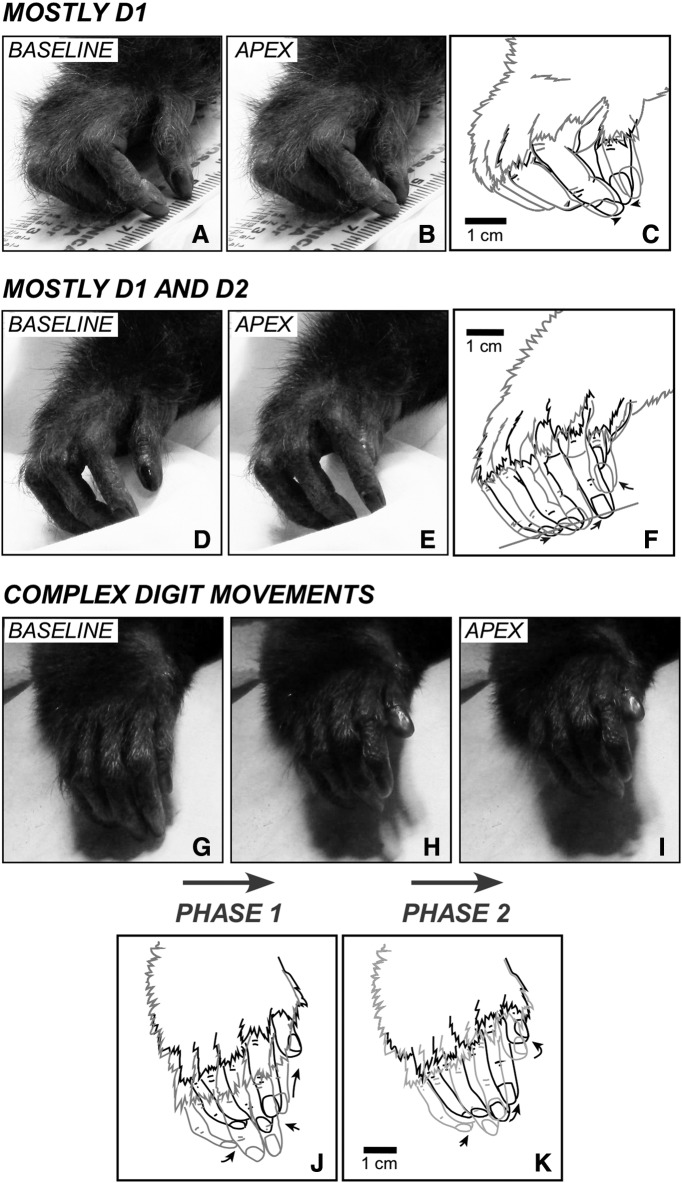Figure 8.
Examples of evoked movements involving D1 and D2. A–C, Evoked movements in which the tips of D1 and D2 oppose each other (B; D2 also moves but with a smaller amplitude; see ruler under the fingers), evoked by LT-ICMS at site 98 of Case 15-03 (see Figure 2-2). D–F, A movement in which D2 is adducted, while D1 abducts and extends and its tip touches the second phalange of D2 (other digits also move). This movement was observed in site 9 of Case 15-03 (see Figure 2-2). The tips of D2–4 are occluded in D and E but were reconstructed in the drawings shown in F. G–K, Relatively complex movement of the digits in which a D1–D2 opposition first opens (H) and then closes so that the distal phalange of D1 touches the proximal and middle phalanges of D2 (I); evoked by LT-ICMS at site 149 of Case 15-04 (see Figure 1-2). J, Illustrates the first phase of the “complex” movement. Light gray line indicates the starting position (baseline, G). Black line indicates the end of the first phase (H). K, Illustrates the second phase of the movement. Other conventions are the same as in Figure 6.

